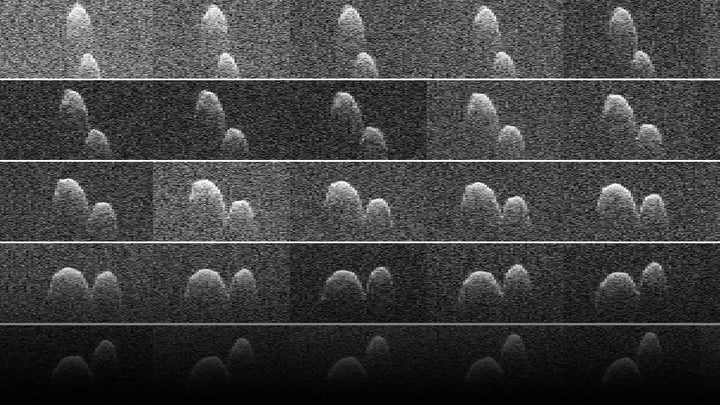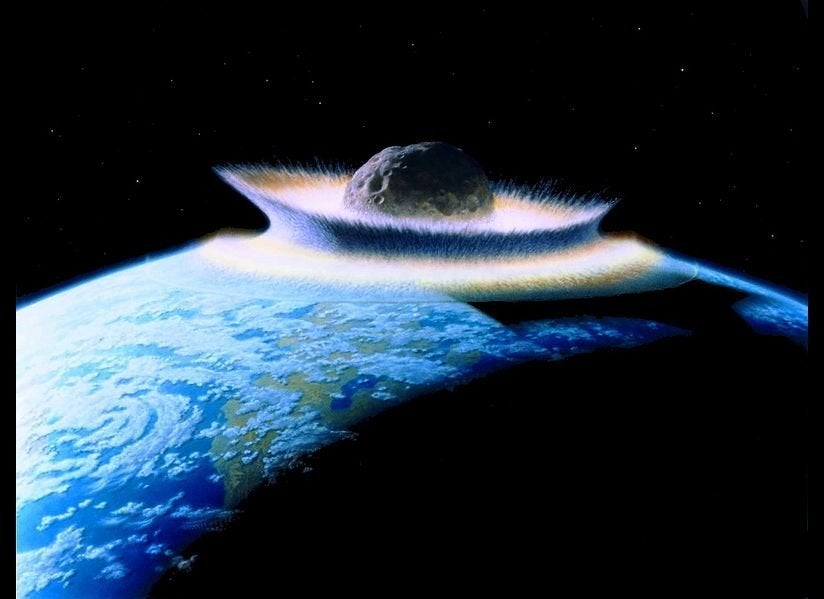With the help of a pair of giant radio telescopes, scientists have captured eerie new video of an asteroid as it whizzed by Earth last month.
Known formally as 1999 JD6, the space rock is being called a "space peanut" because of its elongated shape and twin lobes.
What explains the lobes?
One possibility is that a couple of "big chunks" came together at some point, asteroid expert Dr. Amy Mainzer, principal investigator for NASA's NEOWISE space telescope program, told The Huffington Post in an email. Another possibility, she said, is that the asteroid--which is about 1.2 miles across at its widest point--is what's left over after a larger asteroid survived some kind of impact.
In any case, the peanut shape isn't particularly unusual.
"Radar imaging has shown that about 15 percent of near-Earth asteroids larger than 600 feet [about 180 meters], including 1999 JD6, have this sort of lobed, peanut shape," Dr. Lance Benner of NASA's Jet Propulsion Laboratory in Pasadena, Calif. and leader of the space agency's asteroid radar research program, said in a written statement.
(Story continues below image.)

Radar images of asteroid 1999 JD6 as seen on July 25, 2015.
Technically a "contact binary" asteroid, 1999 JD6 made its closest approach to Earth at 12:55 a.m. EDT on July 25, when it passed by our planet at a distance of about 3.5 million miles. That's about 19 times the distance from the Earth to the moon.
The video is made up of images captured over an eight-hour period. NASA created it via a technique known as bistatic observation: the 70-meter Deep Space Network antenna at Goldstone, Calif. beamed a radar signal at 1999 JD6, and the reflected signal was received by the Green Bank Telescope in West Virginia.
Mainzer said radar imaging is a great tool for observing asteroids--at least when conditions are right.
"Because radar waves have to travel to the object, reflect off of it, then travel back to our receivers, the asteroids have to get pretty close to be able to get this kind of detail," she said in the email. "But when the asteroids do get close enough, radar delivers images that are matched in detail only by spacecraft visits, which are a lot more expensive."
While 1999 JD6 poses no immediate threat to us, watching it tumble noiselessly in the video is a reminder that somewhere out there, a dangerous asteroid may be on a potentially cataclysmic collision course with Earth. It's happened many times before, and there's no doubt it will happen again.
Lucky for us, scientists are working hard not only to detect potentially dangerous asteroids but also to eliminate the threat they pose.
One strategy on the drawing board is the so-called "gravity tractor"-- a space probe that would be launched toward an asteroid and use gravity to steer it away from the Earth.

